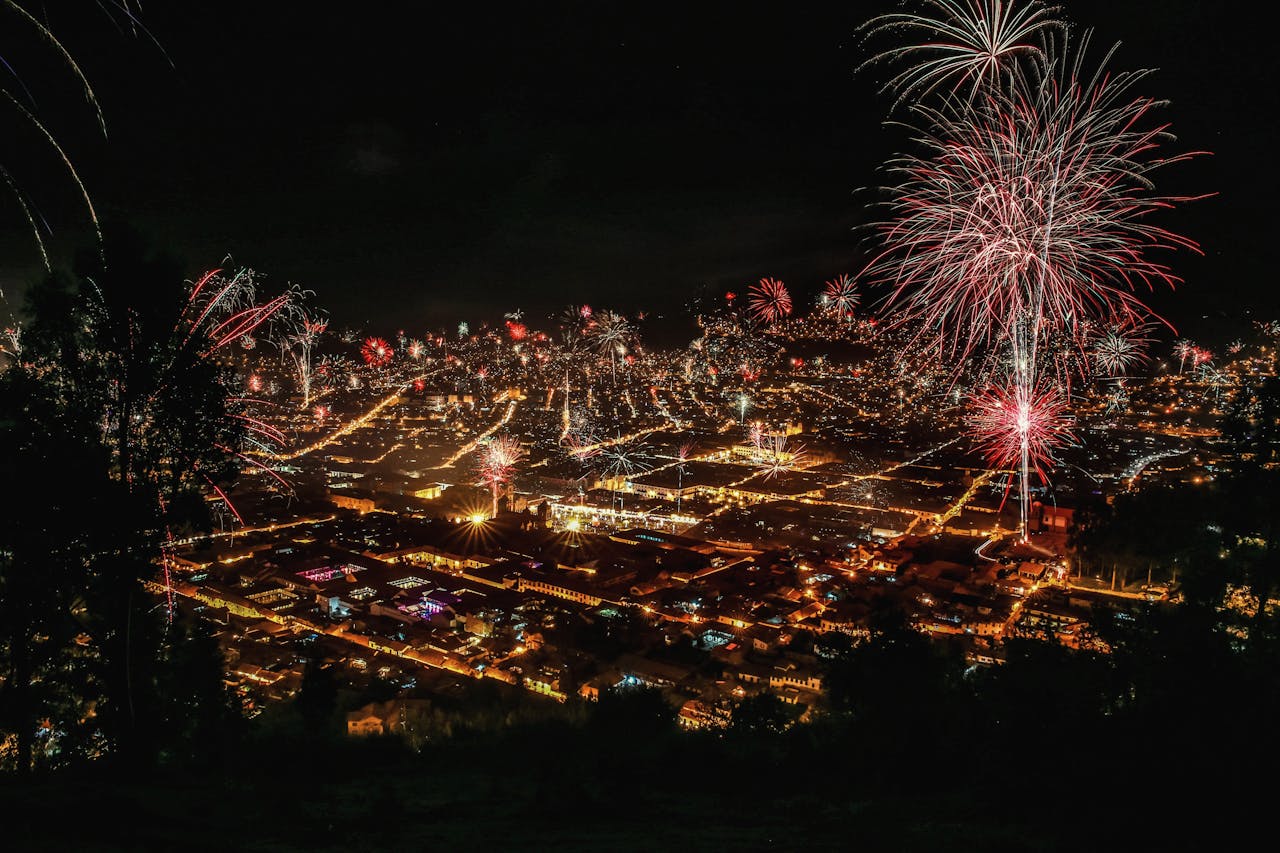Fireworks displays are a spectacle enjoyed worldwide, captivating audiences with their dazzling colors and explosive patterns. Capturing these moments through photography can be both rewarding and challenging.
Seasoned photographers already have an idea on what to do to nail great fireworks shots. However, for amateur photographers, mastering the art of fireworks photography requires specific technique and preparation.
In preparation for the 4th of July or other celebrations, let's explore how to photograph fireworks effectively, from choosing the right equipment to implementing essential tips for stunning results.

How to Photograph Fireworks?
Photographing fireworks successfully hinges on understanding exposure and timing.
Here’s a step-by-step guide on how to capture breathtaking fireworks photos:
Choose the Right Location: Scout for a vantage point that offers an unobstructed view of the fireworks. Consider the wind direction to avoid smoke obstructing your shots.
Plan your trip accordingly and drop by early to secure a nice spot. If there are tons of photographers in your area, you might have the same idea as them and the spot might be full in no time.
Use Manual Mode: Set your camera to manual mode to have full control over settings. Start with an ISO setting between 100-400 to minimize noise.
Long Exposure Settings: Opt for a slow shutter speed (starting around 1-2 seconds) to capture the trails and bursts of the fireworks effectively. Experiment with different shutter speeds to find the ideal balance.
Using faster shutter speeds are great if you want to freeze the moment. However, fireworks photography requires slower shutter speeds due to the amount of light getting into your camera's sensor.
Slowing your shutter speed and going for a long exposure will help you achieve the light trails or flowery streaks of light from a fireworks display.
Focus Manually: Switch to manual focus mode and set your focus to infinity. This ensures that distant fireworks are sharply captured.
If you are just learning photography, try to shoot with Autofocus on. You will then notice that your camera will hunt focus instead of capturing the fireworks.
Remote Shutter Release: Use a remote shutter release or the camera’s timer to minimize camera shake and ensure sharp images.

What is the Best Camera to Shoot Fireworks?
While any camera capable of manual settings can photograph fireworks, DSLR and mirrorless cameras excel due to their ability to control exposure and focus manually.
These cameras offer flexibility in adjusting settings like aperture, shutter speed, and ISO, crucial for capturing vibrant fireworks against the night sky.
If you do not have a mirrorless camera or DSLR camera, explore your mobile camera's option if there is a manual mode. Adjust your settings accordingly to capture the beauty of the event.
In addition to the camera, you also need a tripod to keep your camera still and prevent camera shake.
The ProMediaGear TRS344 is a great addition to your gear list since you might have to hike to get into a nice spot. The lightweight carbon construction of this tripod is a huge plus. It matters most especially when trekking or traveling as the weight won't bother you that much.

5 Tips to Take Fireworks Photos for Beginners
Arrive Early: Secure a good spot and set up your equipment well before the fireworks begin to ensure you're prepared.
It is better to chill and relax on the area while waiting for the fireworks show to start.
Arrive late and you'll be scrambling to set up your equipment. The worst-case scenario is you failing up to setup your camera since the best spots are already taken.
Frame Composition: Consider including landmarks or silhouettes in your frame to add context and depth to your fireworks photos.
It doesn't mean that the fireworks against the night sky is not good. It's just better to add foreground in your shots as it adds a reference point in your images.
Experiment with Exposure: Vary your shutter speed and aperture settings throughout the display to capture different effects, from sharp bursts to graceful trails.
Avoid Overexposure: Monitor your histogram to prevent overexposing the brightest parts of the fireworks. Adjust your settings accordingly if necessary.
Another reason why you don't want to overexpose is the loss of details. Camera sensors do not keep details when an image is overexposed even when you shoot RAW. It is better to shoot a little bit underexposed in these situations in order to preserve details.
Post-Processing: Use editing software to enhance colors and contrast subtly. However, aim to capture the essence of the fireworks in-camera as much as possible.
Related post: Capturing Nature: How to Shoot Lightning Photography

Final Thoughts: It's Time to Shoot!
Photographing fireworks requires patience, technical skill, and creativity. By understanding the fundamentals of exposure, using the right equipment, and implementing essential tips, you can elevate your fireworks photography to new heights.
Whether you're documenting a local celebration or capturing fireworks on a grand scale, these techniques will help you create memorable images that preserve the magic and beauty of fireworks displays.
Mastering the art of photographing fireworks takes practice and perseverance. Armed with the knowledge from this guide, you're ready to venture out and capture stunning fireworks photos that not only showcase your skills but also convey the exhilaration and awe of these spectacular events.

